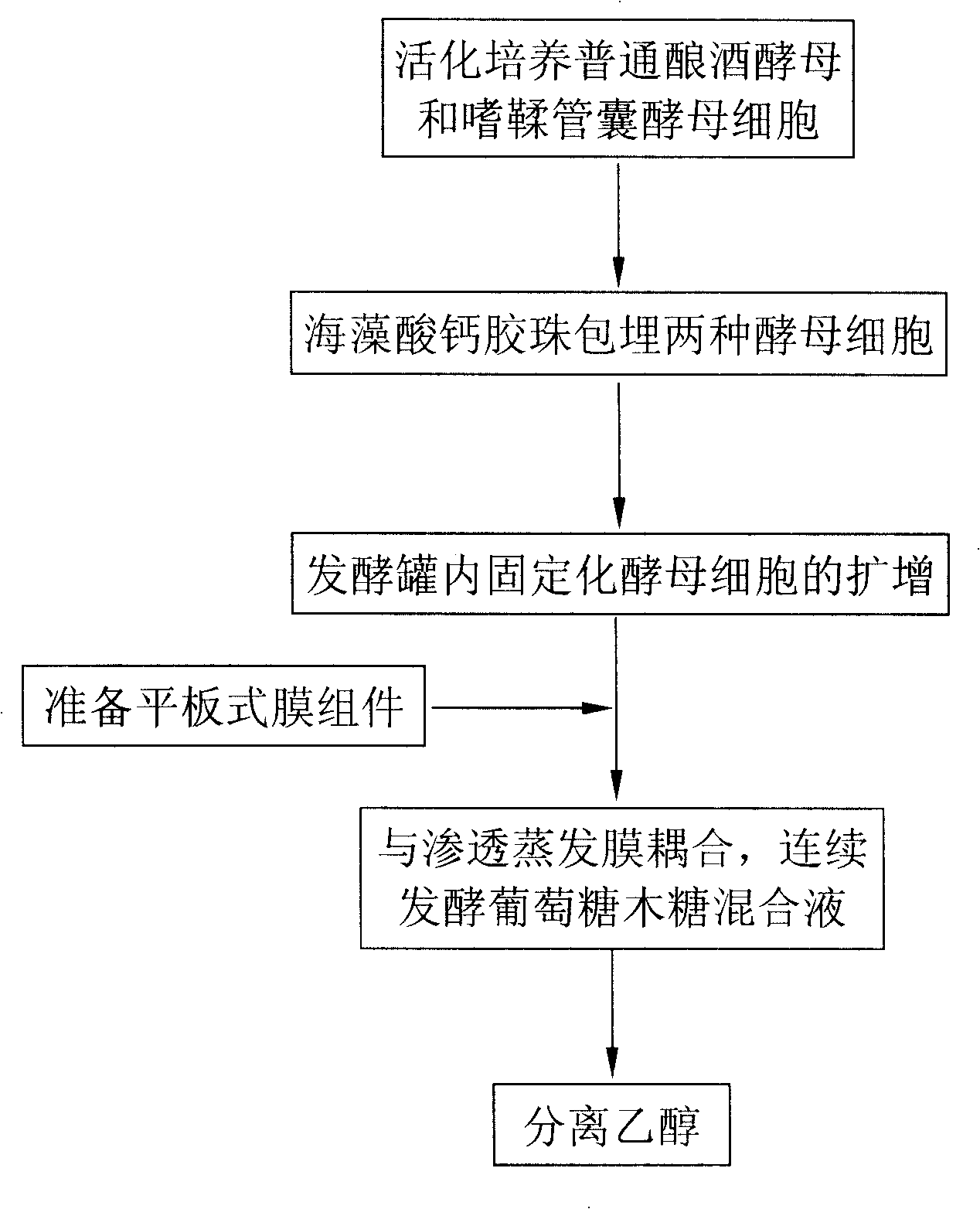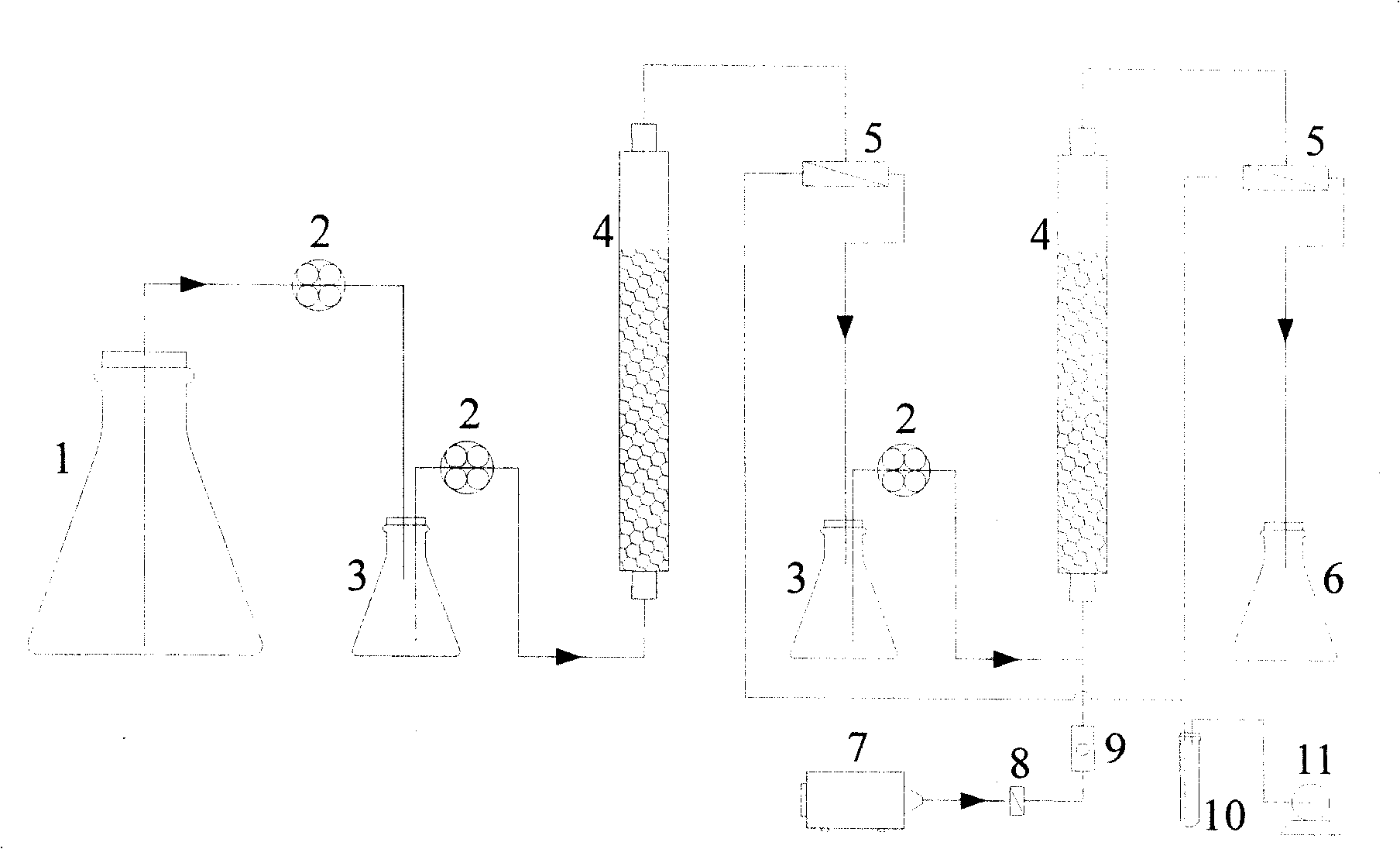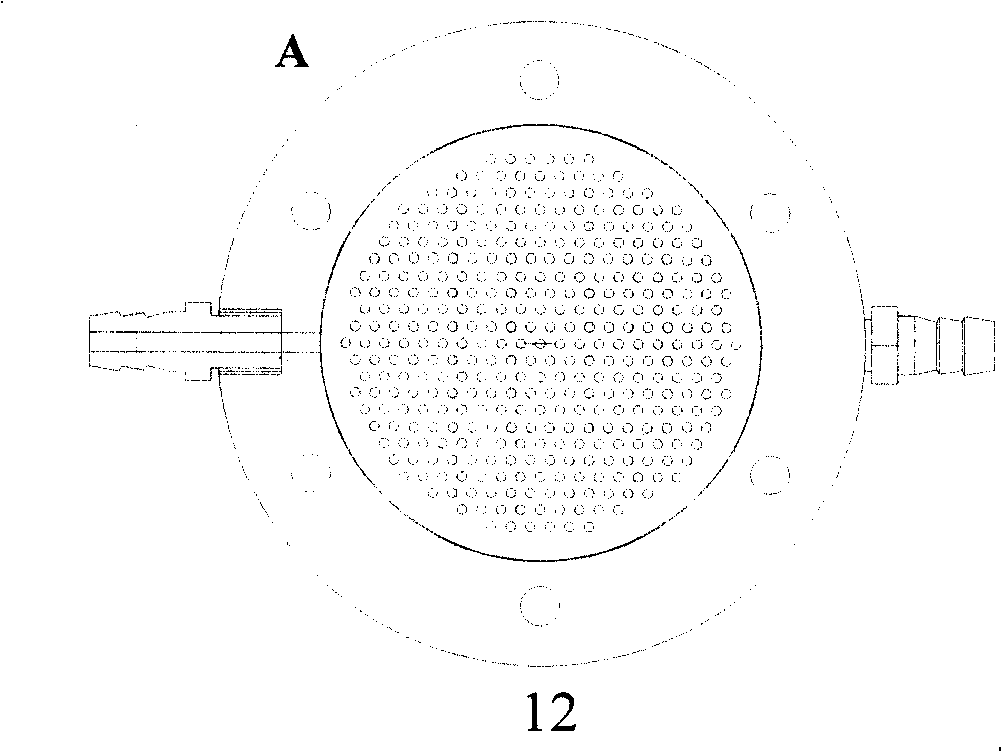Method for continuous fermentation of glucose xylose by coupling immobilized yeast cell and pervaporation membrane
A pervaporation membrane and glucose technology, applied in the direction of supporting/immobilizing microorganisms, sterilization methods, microorganism-based methods, etc., can solve problems such as pollution, membrane separation performance degradation, etc., to reduce environmental pollution and reduce inhibition , Reduce membrane fouling and resistance
- Summary
- Abstract
- Description
- Claims
- Application Information
AI Technical Summary
Problems solved by technology
Method used
Image
Examples
Embodiment 1
[0028] In this example, calcium alginate was used to embed the cells of S. cerevisiae and Pachysomyces tannophilus.
[0029] Use two Erlenmeyer flasks to configure 200ml of cell activation medium, which contains 50g L of glucose -1 , (NH 4 ) 2 SO 4 2g·L -1 , KH 2 PO 4 2g·L -1 , yeast powder 5g·L -1 , peptone 5g·L -1 . Sterilize at 115°C for 25 minutes, cool to room temperature, and set aside. Scrape off a little of the two kinds of yeast cells stored on the slant culture medium on the aseptic operating table, put them into the respective activation medium, and activate and cultivate them on a shaking table at 30°C and 150 rpm for 48 hours.
[0030] Configuration 200ml, 60g·L -1 CaCl 2 Two bottles of solution; 400ml, 40g·L -1 A bottle of sodium alginate solution. Sterilize at 121°C for 25 minutes, cool to room temperature, and set aside. Divide the sodium alginate solution into two parts, and mix them with activated S. -1 Drop in at a rate of 60g·L -1 CaCl 2 s...
Embodiment 2
[0034] This embodiment is the proliferation and cultivation of yeast cells in a fermenter.
[0035] Cell proliferation medium contains glucose 50g L -1 , yeast extract 2g·L -1 , KH 2 PO 4 2g·L -1 , MgSO 4 0.2g·L -1 , CaCl 2 0.2g·L -1 , (NH 4 ) 2 SO 4 2g·L -1 ; Fermentation medium contains glucose 50g L -1 , xylose 25g·L -1 , yeast extract 2g·L -1 , KH 2 PO 4 2g·L -1 , MgSO 4 0.2g·L -1 , CaCl 2 0.2g·L -1 , (NH 4 ) 2 SO 4 2g·L -1 . Sterilize at 115°C for 25 minutes, cool to room temperature, and set aside.
[0036] Clean the fermentation tank, buffer tank, silicone tube, iron tube, rubber plug, etc. with detergent and soft brush, rinse with ultrapure water three times and wrap it in kraft paper, sterilize at 121°C for 25 minutes, and dry; fix the two fermentation tanks On the experimental rack, put the rubber beads embedded with yeast cells into two fermenters respectively, so that the total volume of the beads in each tank accounts for 70-80% of the v...
Embodiment 3
[0040] This embodiment is coupled with a pervaporation membrane to continuously ferment the glucose-xylose mixture and separate ethanol.
[0041] Configure fermentation medium, including glucose 50g·L -1 , xylose 25g·L -1 , yeast extract 2g·L -1 , KH 2 PO 4 2g·L -1 , MgSO 4 0.2g·L -1 , CaCl 2 0.2g·L -1 , (NH 4 ) 2 SO 4 2g·L -1 . Sterilize at 115°C for 25 minutes, cool to room temperature, and set aside.
[0042] The proliferation medium is replaced by the cell fermentation medium, and the pervaporation membrane module is respectively connected between the two serial fermenters and between the last fermentor and the recovery tank, and the cycle fermentation is carried out at 35°C. After 32 hours of fermentation, the whole device enters a steady state, and the vacuum pump is started for pervaporation to separate ethanol, and the separated ethanol vapor is condensed and collected in a product tank with a cold trap.
[0043] Experimental results: After 370 hours of ...
PUM
| Property | Measurement | Unit |
|---|---|---|
| concentration | aaaaa | aaaaa |
| diameter | aaaaa | aaaaa |
Abstract
Description
Claims
Application Information
 Login to View More
Login to View More - R&D
- Intellectual Property
- Life Sciences
- Materials
- Tech Scout
- Unparalleled Data Quality
- Higher Quality Content
- 60% Fewer Hallucinations
Browse by: Latest US Patents, China's latest patents, Technical Efficacy Thesaurus, Application Domain, Technology Topic, Popular Technical Reports.
© 2025 PatSnap. All rights reserved.Legal|Privacy policy|Modern Slavery Act Transparency Statement|Sitemap|About US| Contact US: help@patsnap.com



